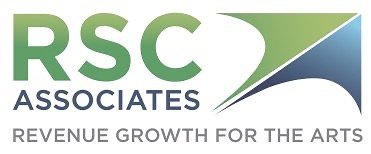THE DO’S AND DON’TS OF CONTRIBUTED REVENUE GOAL SETTING
With Bob Swaney
In today’s podcast, we’ll discuss setting informed and thoughtful contributed revenue goals for your annual fund. Doing this well usually requires a delicate balance between science and art—but never fantasy!
Your goals drive the financial engine and empower mission-driven programs, performances, and exhibitions, so they are too important to get wrong. Today, I’ll share the key do’s and don’ts of goal-setting so you can create realistic yet inspiring revenue objectives that galvanize your team and motivate your supporters.
Read the full transcript below or click the button to listen.
FULL TRANSCRIPT OF THE PODCAST
Today, let’s talk about setting informed and thoughtful contributed revenue goals for your Annual Fund. Doing this well usually requires a delicate balance between science and art—but never fantasy! Your goals drive the financial engine, empowering mission-driven programs, performances, and exhibitions, and so they are too important to get wrong.
Too often, I’ve seen organizations either underestimate their potential or set their sights unrealistically high, leading to missed targets, underfunded projects, or overworked staff. By understanding the key do’s and don’ts of goal-setting, you can create realistic yet inspiring revenue objectives that galvanize your team and motivate your supporters. Let’s dive in!
First, the Don'ts of Contributed Revenue Goal Setting
1. Don’t Base Goals Solely on Last Year’s Performance
It’s easy to simply look at last year’s numbers and add a percentage increase, but this can be a risky approach. Last year’s successes or setbacks may have been influenced by unique circumstances, such as a one-time gift or a special campaign. Basing new goals strictly on past performance without adjusting for these factors ignores the dynamic nature of fundraising, which changes in response to shifts in the economy, donor interests, and even organizational leadership.
2. Don’t Set a Goal Just to Balance the Budget
Budget-balancing revenue goals are tempting because they create a neat and tidy financial plan, but they can lead to undue pressure on fundraisers and staff if they’re unrealistic. Simply calculating the gap between program expenses and existing revenue streams often doesn’t consider donor readiness, cultivation timelines, or prospect capacity. When fundraisers feel like they're constantly “catching up” rather than working with a strategy, it affects morale and productivity.
3. Don’t Ignore Donor Data and Trends
Revenue projections without donor data are guesswork. It’s crucial to review your donor database for insights into giving patterns, donor retention, and average gift sizes. When you set goals in isolation from the giving trends within your community, you risk setting figures that are either too conservative or far too ambitious. Data-driven insights help refine those projections and increase your chances of achieving them.
4. Don’t Overlook the External Environment
The world beyond your organization—like the economy, local issues, or political climate—can influence contributed revenue significantly. For instance, in economically challenging times, individual donors may scale back their giving, while corporate sponsorships could become scarcer. Ignoring these external factors can lead to goals that are out of touch with the financial landscape your donors are navigating.
5. Don’t Set Generic, Organization-Wide Goals Without Departmental Input
Organization-wide revenue goals should be set in concert with team leaders and key departments. Setting high-level targets without consulting those who manage relationships, such as development officers, can lead to unrealistic expectations. If department heads and fundraisers aren’t aligned with the goals, it’s challenging to create a united and focused effort to meet them.
6. Don’t Forget to Review and Adjust Mid-Year
A set-it-and-forget-it approach to goal-setting is a recipe for stress. Failing to review and adjust goals mid-year overlooks the natural ebb and flow of fundraising and external factors that could change the trajectory of your results. By checking in regularly, you can course-correct, celebrate milestones, and refine strategies in real-time rather than at the end of the year.
The Do’s of Contributed Revenue Goal Setting
1. Do Set SMART Goals (Specific, Measurable, Achievable, Relevant, Time-bound)
SMART goals are the bedrock of effective planning. For contributed revenue, setting goals that meet these criteria helps clarify exactly what needs to happen and within what timeframe. For example, instead of a vague “increase revenue,” aim to “increase individual contributions by 10% within the next fiscal year.” This structure enables everyone to understand expectations and track progress more easily.
2. Do Incorporate Prospect Research and Pipeline Data
Assessing your prospect pipeline and conducting prospect research can make a world of difference in goal-setting. By understanding where new gifts could come from, your team can work more strategically. Prospect research informs not just “how much” but “from whom,” allowing for targeted cultivation and a clearer pathway to reaching ambitious yet achievable goals.
3. Do Engage the Entire Team in Goal Setting
When development staff, program leaders, and Board members are involved in setting revenue goals, they’re more likely to take ownership of the outcomes. Collaborative goal-setting leverages each team member's insights, making goals more realistic and promoting buy-in across the organization. Plus, goals set with input from multiple perspectives often reflect both the organizational mission and the donor landscape.
4. Do Create Tiered Goals (Base, Stretch, and Aspirational)
Tiered goals provide a range that recognizes current capacity while encouraging ambitious, forward-thinking efforts. A “base” goal represents the minimum you’re confident in achieving, a “stretch” goal adds challenge and an “aspirational” goal requires additional resources or exceptional effort. This method enables an organization to celebrate incremental successes while still reaching for new heights.
5. Do Review Key Donors and Their Giving Capacity Annually
Annual reviews of key donors and their capacity for increased giving help set grounded revenue targets. By looking at individual histories and cultivation potential, you gain a clearer sense of where additional revenue might realistically come from. This annual assessment keeps goals rooted in real relationships, reinforcing a sustainable, relationship-based approach to fundraising.
6. Do Factor in New Initiatives or Partnerships
When new initiatives or partnerships are on the horizon, they present exciting opportunities to expand contributed revenue. Projects like community programs, education partnerships, or exclusive donor events can justify a revenue goal increase and provide specific initiatives for which donors may be eager to contribute. By factoring in new opportunities, you build momentum and interest while setting achievable revenue goals.
Preparing an Aggressive Yet Achievable Revenue Budget
If you are in charge of raising money, you need to craft a careful approach to revenue budget planning to strike the right balance between ambition and reality. Here’s a simple method to ensure revenue targets are both aggressive and achievable:
1. Analyze Historical Data: Start with a deep dive into the previous years’ donor data, paying close attention to average gifts, retention rates, and major gifts. Use this to project baseline revenue for the coming year.
2. Assess Pipeline Strength and Cultivation Status: Review the status of major gift prospects, particularly those in cultivation, and assign expected gift amounts. Calculate probabilities based on the cultivation stage to estimate total revenue from major gifts.
3. Incorporate Known Challenges and Opportunities: Account for changes in the donor environment and economic trends, adjusting projections accordingly. Factor in any new programs or donor engagement strategies that might drive additional revenue.
4. Set Tiered Goals: Establish base, stretch, and aspirational targets, aligning with your Board’s and team’s growth vision. Present these options to leadership, clarifying which initiatives will be funded at each level.
5. Build a Quarterly Review Process: To keep your revenue projections realistic, set up quarterly reviews with your team. This allows you to assess progress, make strategic adjustments, and address gaps before they become problems.
6. Communicate Goals Transparently: Share revenue goals and milestones openly with Board members and key stakeholders so they understand both the ambition and realism driving your targets.
If you remember just one thing, make it this: When you set contributed revenue goals that inspire ambition without risking certain failure, everyone from donors to staff to volunteers feels the win. This strategic and thoughtful approach builds both financial health and organizational confidence—key ingredients for long-term success. By mastering these do’s and don’ts, your organization can grow its contributed revenue thoughtfully and sustainably.



